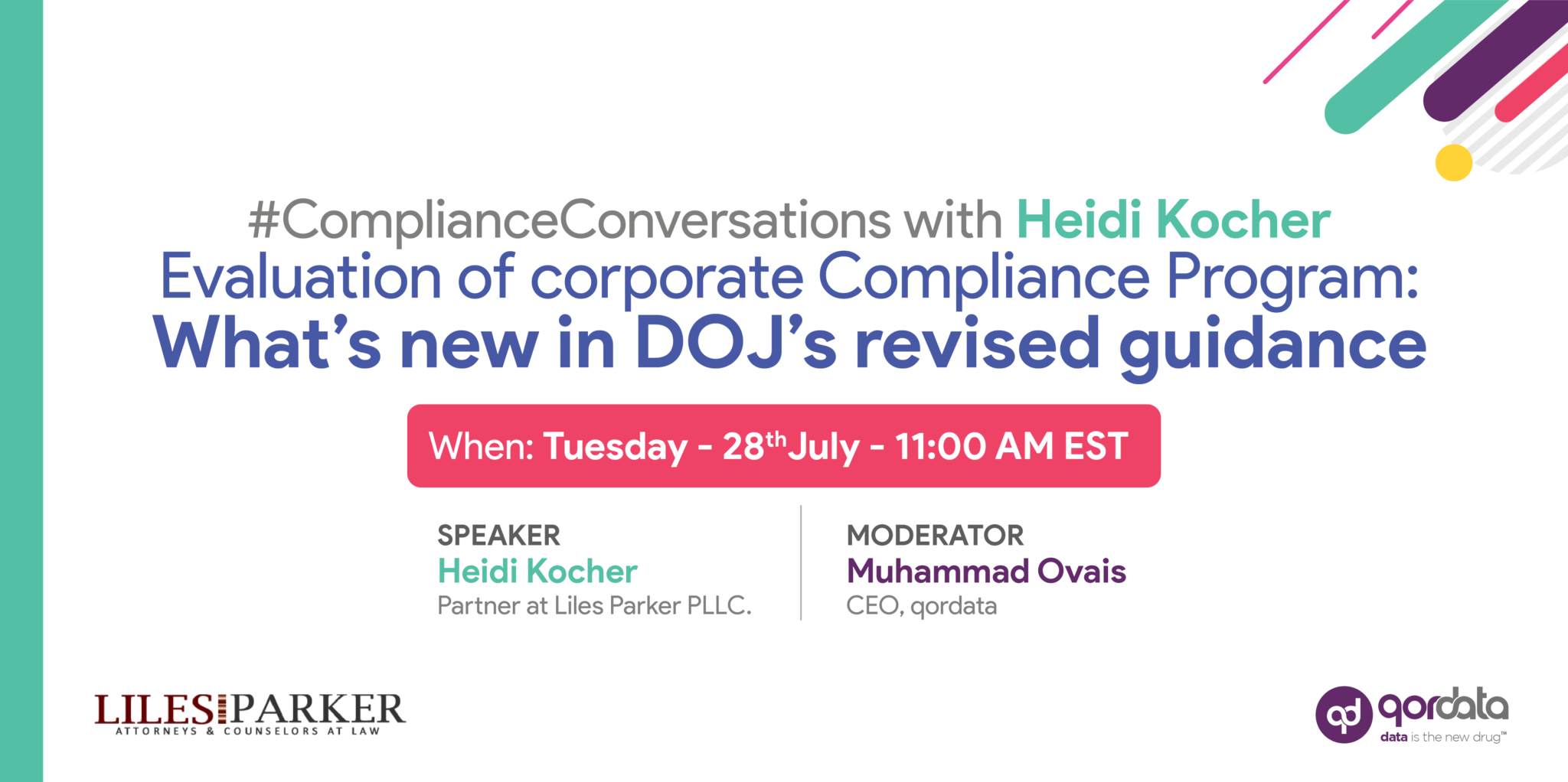Table of Contents
ToggleLife sciences companies have been one of the most regulated industries over the past 10 to 15 years, with a significant number of regulatory enforcements in total. In fact, the total penalties from compliance-related violations have crossed over $50 billion since 2000 in the U.S.
Prevalent signals in both messaging and actions from regulators indicate a potential increase in enforcement. This makes it imperative for life sciences companies to continuously improve their compliance programs.
Continuously improving the effectiveness of compliance programs is imperative for life sciences organizations as it defends them against regulatory sanctions, product bans, reputational damage, and other dire consequences.
The approach entails a proactive and systematic way of identifying gaps and compliance risks, promptly implementing corrective actions, utilizing data analytics, and refining compliance processes and activities.
By continuously improving compliance programs, compliance officers can also navigate the complexities of the regulatory landscape, eventually establishing the foundation for data-driven compliance.
Let’s explore how compliance officers can ensure continuous improvement of their compliance program and ensure effective adherence to rules and regulations enacted by the regulatory authorities.
Developing A Continuous Improvement Strategy For Compliance Programs
Developing and implementing a continuous compliance improvement strategy is the first part of the equation for organizations and compliance officers.
It starts with comprehensive planning and understanding of the totality of risk an organization faces in current compliance stature, how the organization can ensure adherence to regulations and more.
Here are the different components involved in planning and executing a continuous improvement strategy for a compliance program:
1. Establish a Compliance Baseline
Begin by conducting a thorough assessment of the current compliance stature of the organization. Identify existing compliance policies, procedures, and controls.
This baseline serves as a reference point to measure improvements and pinpoint areas requiring attention.
It will also serve as the foundation on which your entire compliance program improvement strategy will be based.
Therefore, you need to carefully examine each aspect of the organization, assess the severity and totality of the risks the organization is currently prone to, and include the information in your plan to use it later to define the most critical objectives.
2. Define Clear Compliance Objectives
Clearly articulate the objectives of your continuous compliance improvement strategy, followed by the desired outcome that you are looking to achieve and actions you will implement to maintain and demonstrate regulatory adherence and minimize policy violations.
Make sure that you align the objective with the regulatory demands and the broader goals of the organization.
The last thing is clarity, that you need to maintain while finalizing objectives.
Whether your objectives include reducing compliance risks, enhancing the efficiency of compliance operations, or implementing a data-driven compliance platform, maintaining clarity in this phase is imperative.
3. Regular Risk Assessments
Implement a solution for regular and comprehensive risk assessments.
Identify potential compliance risks specific to the life sciences industry, such as those related to HCP engagements or off-label promotions.
This ongoing evaluation forms the basis for targeted improvements, which is one of the most effective ways to remediate high-priority risks before they escalate to critical levels.
4. Engage Stakeholders
Involve key stakeholders in the compliance improvement process.
This may include compliance officers, legal teams, C-level executives, department heads, and employees directly involved in compliance-related activities.
The objective is to take their feedback and input on potential areas of enhancement, understand the regulatory challenges that the organization has faced in the past, and gather insights from those directly involved in compliance-related activities.
5. Technology Solutions for Compliance Monitoring
When augmenting compliance programs, it is essential to look at technologies such as artificial intelligence or automation that are currently improving compliance.
According to research, 53% of compliance officers look to enhance technology and data analytics for compliance.
Leveraging technology such as automation would streamline compliance processes and significantly enhance efficiency in monitoring key risk areas, compliance activities, remediating and documenting potential compliance violations or misconducts and more.
Another reason for including technology in your compliance improvement strategy is that data-driven compliance solutions provide actionable insights through data analytics.
Compliance officers can utilize this information for decision making and to ensure compliance throughout the organization.
6. Regular Audits and Monitoring
Conduct regular internal audits to assess the effectiveness of existing compliance controls.
Monitoring mechanisms should be in place to detect and remediate deviations or compliance issues early on.
These audits serve as a feedback loop, guiding improvements based on identified weaknesses or areas of non-compliance.
With the identification of gaps or challenges, compliance officers can direct their focus toward proactively remediating such risks.
7. Data-Driven Decision Making
Utilize analytics to measure and track compliance performance.
Key performance indicators (KPIs) should be defined and regularly monitored, providing a quantifiable basis for decision-making.
8. Feedback Mechanism and Continuous Review
Establish a feedback mechanism where employees can report concerns or suggest improvements.
An easily accessible whistleblower hotline can be considered as one way to ensure that employees report all information of misconduct to the organization’s compliance team or other relevant stakeholders without resorting to external sources to report policy violations.
The information reported by employees should be regularly reviewed to identify recurring issues or emerging trends in compliance.
This iterative process ensures that the compliance improvement strategy remains responsive to evolving internal and regulatory challenges.
9. Periodic Strategy Review and Adjustment
The regulatory landscape and business environment both are dynamic.
Therefore, periodically reviewing and adjusting your continuous compliance improvement strategy to align with changes in regulations, industry standards, and organizational goals is the way forward.
10. Document and Communicate Improvements
Maintain a transparent record of improvements made through the continuous compliance improvement strategy.
Communicate these achievements internally and, when appropriate, externally to showcase the organization’s commitment to compliance excellence.
The Outcomes of Continuously Improving Compliance Program
Continuously improving the effectiveness of compliance programs aligns with the core principles of regulatory compliance by promoting a proactive, risk-based approach to compliance gap assessments, monitoring key risk areas, and other integral parts of the compliance program.
All of this ensures adherence to regulatory requirements, effective monitoring and remediation of risks, and continuous monitoring and evaluation of the compliance program.
Let’s understand how these aspects are improved through continuous improvements.
1. Aligning with Regulatory Demands
- Risk-Based Approach: Continuous improvement emphasizes a risk-based approach, encouraging organizations to identify, assess, and prioritize compliance risks based on their likelihood and potential impact. This risk-centric approach aligns with regulatory expectations that organizations focus their compliance efforts on areas of highest risk.
- Proactive Measures: Continuous improvement promotes proactive measures rather than reactive responses. This aligns with regulatory expectations that organizations anticipate and address potential compliance issues before they escalate into non-compliance events or regulatory sanctions. On a higher level, this also tends to improve the maturity of a compliance program, taking it from being reactive and passive to proactive.
- Ongoing Evaluation: Continuous improvement entails ongoing evaluation and refinement of compliance practices. This aligns with regulatory expectations that organizations regularly assess the effectiveness of their compliance programs and make necessary adjustments to ensure continued compliance. A better way to conduct ongoing evaluation is through data-driven compliance monitoring.
2. Ensuring Compliance Within An Organization
Augmenting compliance programs enables compliance officers to pinpoint their compliance program’s weaknesses and address them promptly.
- Identifying and Addressing Gaps: Continuous improvement efforts help identify gaps and weaknesses in compliance procedures and processes, allowing for timely corrective actions to prevent issues of non-compliance.
- Adapting to Changing Regulations: The evolving regulatory landscape necessitates continuous adaptation and improvement. Continuous improvement enables organizations to stay abreast of changing regulations and adapt their compliance practices accordingly.
- Enhancing Compliance Culture: Continuous improvement fosters a culture of compliance within an organization, embedding compliance considerations into every aspect of business operations. This cultural shift promotes employee engagement and reduces the likelihood of unintentional non-compliance.
3. Ensures Effective Monitoring and Remediation of Risks
Effective monitoring and remediation of risks are critical to ensuring compliant business operations.
They also tend to improve the understanding of the totality of risks an organization faces. Here are a few aspects that are
- Risk Assessment and Monitoring: Continuous improvement promotes regular risk assessments to identify and prioritize compliance risks. This risk monitoring enables organizations to proactively address emerging risks and prevent them from materializing.
- Root Cause Analysis: Continuous improvement encourages root cause analysis to identify the underlying causes of compliance issues. This approach ensures that corrective actions address the root causes of non-compliance, preventing recurrence.
- Data-Driven Insights: Continuous improvement leverages data-driven insights to identify patterns and trends in compliance risks. This data-driven approach enables organizations to target their remediation efforts effectively.
4. Reduced Likelihood of Compliance Failures and Legal Penalties
A robust continuous improvement strategy in compliance serves as a formidable defense mechanism against the pitfalls of non-compliance, creating a shield that goes beyond financial considerations to safeguard the very integrity of the organization.
Let’s delve deeper into the multifaceted aspects of how this approach effectively reduces the likelihood of compliance failures and legal penalties.
· Proactive Risk Identification and Mitigation
Continuous improvement entails a proactive stance in identifying and mitigating potential risks before they escalate into compliance failures.
Through regular risk assessments, organizations can pinpoint vulnerabilities in their processes, systems, or employee practices.
This early detection allows for timely intervention, preventing compliance lapses that might lead to legal repercussions.
· Internal Audits and Monitoring Mechanisms
Regular internal audits and monitoring mechanisms are integral components of a continuous improvement strategy.
These assessments serve as diagnostic tools, evaluating the effectiveness of existing compliance controls.
By identifying areas of weakness or potential non-compliance during internal audits, organizations can take corrective actions promptly, minimizing the risk of legal consequences.
5. Enhanced Monitoring and Evaluation of Risk
Continuous monitoring involves ongoing surveillance of compliance activities and processes to identify potential issues and assess the effectiveness of compliance controls.
Regularly assessing the overall effectiveness of the compliance program and making necessary adjustments to ensure continued compliance.
Continuous monitoring and evaluation enable organizations to:
- Identify Early Warning Signs: Continuous monitoring allows organizations to detect early warning signs of potential compliance issues, enabling timely intervention to prevent non-compliance events.
- Measure Compliance Effectiveness: Continuous evaluation provides insights into the effectiveness of compliance controls and processes, allowing for targeted improvements and resource allocation.
- Maintain Regulatory Compliance: Continuous monitoring and evaluation ensure that organizations maintain compliance with evolving regulatory requirements and expectations.
Conclusion
Continuous improvement is critical for compliance programs’ success, especially in the highly regulated life sciences industry. Therefore, compliance officers should establish a baseline, define clear objectives, conduct regular risk assessments, and implement other actionable aspects mentioned in this article to augment their compliance program.
Since continuous improvement aligns with regulatory demands, it is indeed an effective approach to demonstrate adherence to compliance with regulators while ensuring compliance at all levels within the organization.
qordata helps compliance officers and life sciences companies to augment the capabilities of their compliance programs.
It enables life sciences companies to overcome increasing regulatory and board scrutiny by providing companies visibility and insights into their compliance data while identifying and minimizing risks to ensure compliant business operations and growth.
Augment Your Compliance Program Capabilities with Compliance Monitoring Solution



